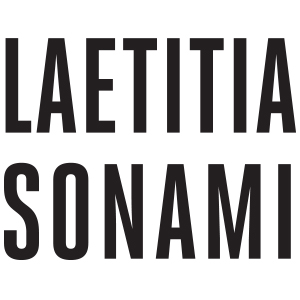NIME
LAETITIA SONAMI
June 2014
Goldsmith-London
And now we leave gloves and other wearables to (small) dictators
In ancient times, when we peered endlessly into hazy green screens flickering like glow worms, adding a bit of flesh was irresistible. While it may have started as a clin d’oeil to the heavy grey rubber controllers worn by scientists of great intent, the lady’s glove evolved and shaped my imagination. After 20 years of gloving, I wonder what I have learnt as I now drop the gauntlet to leave some of the glamour behind and explore its attractive weaknesses to build another instrument.
A slow learner may be, but like with most traditional instruments, it takes time to appreciate the limitations of the instrument, the boundaries of its expression, the pushback on one’s intents. I had good models, musicians who resisted the appeal of infinite buttons and modules: Eliane Radigue for instance who for thirty years adapted to the temperamental moods of her ARP 2500, or Michel Waisvisz who used his Hands for twenty years and would probably still wave them if present.
So while the practice of a gestural controller started in 1991 with desires of an embodied expression of control and power, the sharing of intent with an audience, all this tinged with dreams of virtuosity, it morphed into desires of inefficiency and unpredictability. This may be the conundrum faced by artists, and especially when dealing with technology. We so want to explore and dominate an unknown yet leave it behind as soon as it becomes domesticated. Dreams of control turn into dreams of chaos. I thus learned to relish the latencies dictated by the software, hardware, and the body itself, which led to a unique organic structure. This may seem obvious to acoustic musicians and athletes, but is often ignored in the design of digital instruments, and absent as less muscle and body parts are involved. I am not talking here about latency of 100 ms but about the time it takes you to bend and lace your shoes…
Unpredictability became more and more welcome. Having conceived the lady’s glove originally as a “controller”, the surprises were limited to functional errors, or structural limitations. For instance the bending of one finger forces other muscles to trigger and contribute unintentional events which in turn shape the performance. These unintentional effects revealed themselves to be crucial to an adaptive performance. The switch from control systems to exploration systems seems to me now inevitable.
I do not claim that this new instrument, currently named the Spring Spyre, achieves much of these goals. Still in its infancy, it may take another 20 years to find its place in my imagination, but for now at least through the use of unpredictable sensors (springs as audio input to small pick ups) and neural nets (Rebecca Fiebrink’s Wekinator), it manages to surprise me… I may have traded spectacle for introspection.
Do not misunderstand me, I am not arguing here against wearables — I am arguing against their current applications and how we as artists need to move beyond illusions of control. The rise of wearables to “enhance” once interaction with the world, small appendages to invisible bodies seems delegated to commerce and politics. Let the dictators, CEOs, the NSA and people with small dreams of power wear appendages to their bodies, raise the pitch of their voice with the gesture of the hand and peer into layers of data. And while some may argue we can now do things better, faster gloves, better shoes… why should we artists spend our time re-inventing the wheel?
Yes, we can build wearables but so our footsteps change and our vision gets blurred. We need to build instruments which transform us, instruments which allow us to explore states in between firm lands, hear different timing structures and sounds from unknown spaces. Inefficient and ineffective instruments which we learn to ride like wild bulls on a limitless plain.
Laetitia Sonami – Oakland, June 2014
